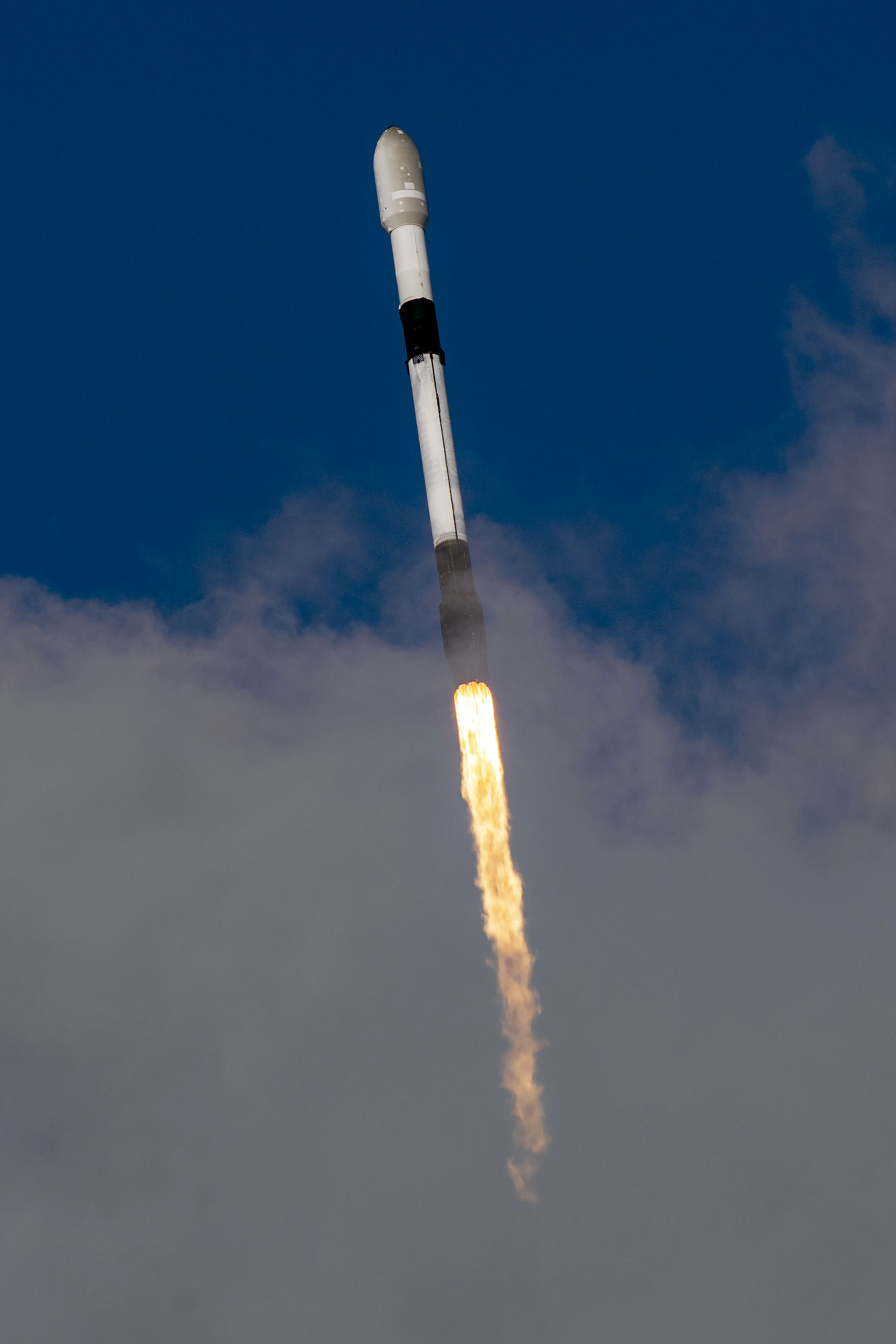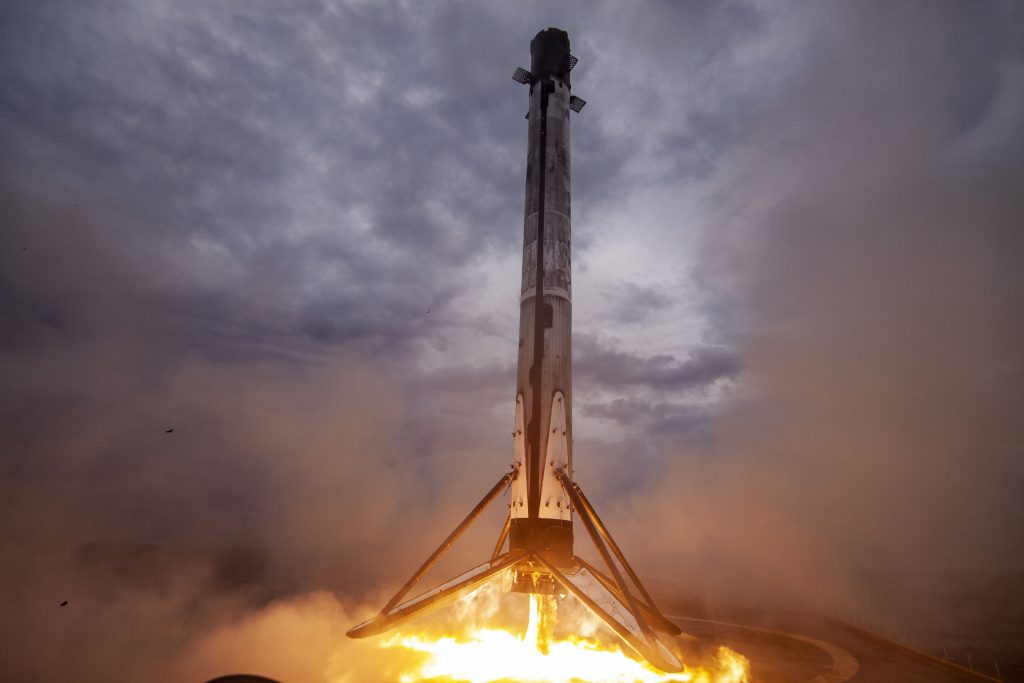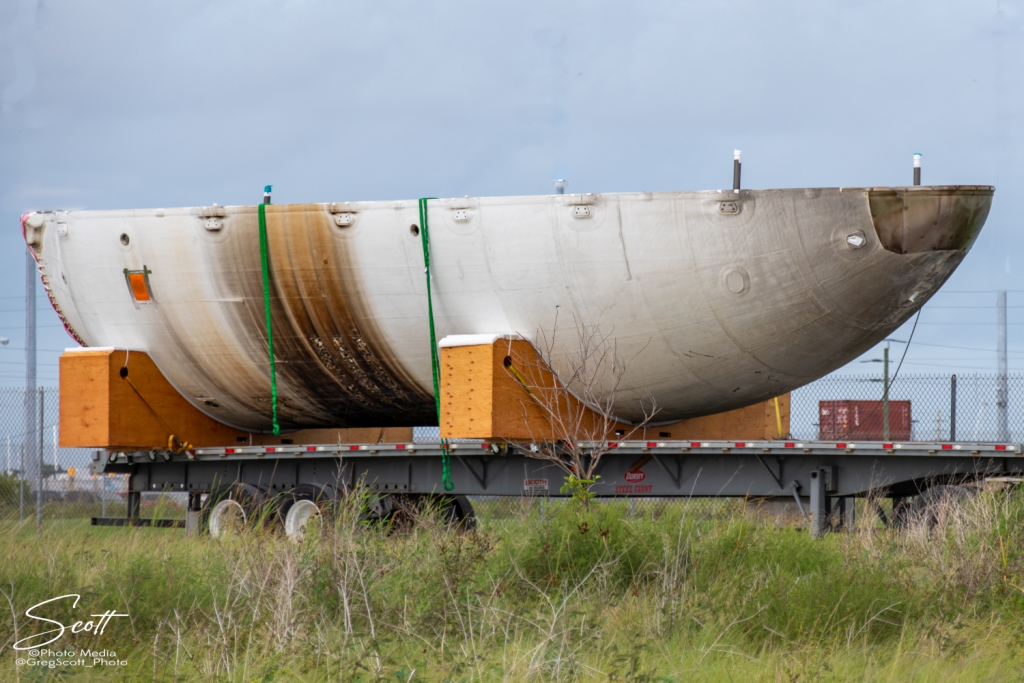Featured Image: SpaceX
Lift Off Time | NET May 27, 2023 – 04:30 UTC | 00:30 EDT |
|---|---|
Mission Name | Arabsat 7B (Badr 8) |
Launch Provider | SpaceX |
Customer | Airbus Defense and Space |
Rocket | Falcon 9 Block 5, Booster B1062-14; turnaround time 78.39 days |
Launch Location | SLC-40, Cape Canaveral Space Force Station, Florida, United States |
Payload mass | 4,500 kg (9,900 lb) |
Where is/are the satellite(s) going? | Geostationary Transfer Orbit |
Will they be attempting to recover the first stage? | Yes |
Where will the first stage land? | ~TBD km downrange on Just Read The Instructions |
Will they be attempting to recover the fairings? | Yes |
Are these fairings new? | TBD |
How’s the weather looking? | The weather is currently 40% go for launch (as of May 25, 2023 at 01:45 UTC) |
This will be the: | – 1st launch of the 7th generation Arabsat satellites – 36th mission for SpaceX in 2023 – 33rd mission for Falcon 9 in 2023 – 227th launch for Falcon 9 ever – 239th mission for SpaceX ever – 162nd flight with a flight of a flight proven booster – 168th reflight of a Falcon 9 booster – 195th booster landing – 121st consecutive booster landing (a record) – 126th SpaceX launch from SLC 40 – 79th orbital launch attempt of 2023 |
Where to watch | Once available an official livestream will be linked here |
What’s All This Mean?
For the 33rd launch of a Falcon 9 rocket in 2023, SpaceX will ferry the Arabsat 7B (Badr 8) satellite to a geostationary transfer orbit. After getting into this orbit, the Badr 8 satellite will do the rest of the work to position itself in a geostationary orbit over Europe. This launch will take place from the east coast of the United States from Cape Canaveral Space Force Station in Florida from Space Launch Complex (SLC) 40. After boosting the Falcon 9 second stage and Badr 8, the Falcon 9 first stage will reenter and land on an Autonomous Spaceport Drone Ship.
What Is Arabsat 7B (Badr 8)?
The Arabsat 7B (also referred to as Badr 8) is the first launch of Arabsat’s 7th generation satellites in a contract with Airbus Defense and Space. Badr 8 is based on the state of the art Airbus Eurostar neo satellite bus. A satellite bus is the core of a satellite and provides power, propulsion, and other essential elements of a satellite’s function.
Airbus’ Eurostar neo uses electric propulsion which allows use on all major launch vehicles with a wide variety of abilities. The bus is designed to last 15 years and provide 25 kilowatts to payloads. The Eurostar neo allows for versatile payload mounting options.

On Badr 8 specifically is a payload developed by Airbus to test optical communications. TELEO will “enable high capacity analogue optical feeder link communications,” according to Airbus. The goal for Airbus is to develop a new, anti-jamming, communications method that will be integrated on future devices
What Will Badr 8 Do?
Badr 8 will be positioned over the 26th degree longitude line. This will enable coverage to central Africa, Europe, and the Middle East in replacement of the Badr 7 satellite, launched in 2015. On board Badr 8, are “massive satellite transponders for satellite TV broadcasting, satellite telecommunications and information exchanging services in ku- band / C – band,” according to Arabsat.
Badr 8 will respond to the increase in demand by adding increased capacity for Arabsat’s hotspot region at their 26 degree longitude mark. It will take between four and five months for the electric propulsion system to place Badr 8 in it’s designated orbit.
What Is Falcon 9 Block 5?
The Falcon 9 Block 5 is SpaceX’s partially reusable two-stage medium-lift launch vehicle. The vehicle consists of a reusable first stage, an expendable second stage, and, when in payload configuration, a pair of reusable fairing halves.
First Stage
The Falcon 9 first stage contains 9 Merlin 1D+ sea-level engines. Each engine uses an open gas generator cycle and runs on RP-1 and liquid oxygen (LOx). Each engine produces 845 kN of thrust at sea level, with a specific impulse (ISP) of 285 seconds, and 934 kN in a vacuum with an ISP of 313 seconds. Due to the powerful nature of the engine, and the large amount of them, the Falcon 9 first stage is able to lose an engine right off the pad, or up to two later in the flight, and be able to successfully place the payload into orbit.
The Merlin engines are ignited by triethylaluminum and triethylborane (TEA-TEB), which instantly burst into flames when mixed in the presence of oxygen. During static fire and launch the TEA-TEB is provided by the ground service equipment. However, as the Falcon 9 first stage is able to propulsively land, three of the Merlin engines (E1, E5, and E9) contain TEA-TEB canisters to relight for the boost back, reentry, and landing burns.
Second Stage
The Falcon 9 second stage is the only expendable part of the Falcon 9. It contains a singular MVacD engine that produces 992 kN of thrust and an ISP of 348 seconds. The second stage is capable of doing several burns, allowing the Falcon 9 to put payloads in several different orbits.
SpaceX is currently flying two different versions of the MVacD engine’s nozzle. The standard nozzle design is used on high-performance missions. The other nozzle is a significantly shorter version of the standard, decreasing both performance and material usage; with this nozzle, the MVacD engine produces 10% less thrust in space. This nozzle is only used on lower-performance missions, as it decreases the amount of material needed by 75%. This means that SpaceX can launch over three times as many missions with the same amount of Niobium as with the longer design.
For missions with many burns and/or long coasts between burns, the second stage is able to be equipped with a mission extension package. When the second stage has this package it has a grey strip, which helps keep the RP-1 warm, an increased number of composite-overwrapped pressure vessels (COPVs) for pressurization control, and additional TEA-TEB.

Falcon 9 Booster
The booster supporting the Badr 8 mission is to be determined.
Following stage separation, the Falcon 9 will conduct two burns. These burns aim to softly touch down the booster on SpaceX’s autonomous spaceport drone ship Just Read The Instructions.

Falcon 9 Fairings
The Falcon 9’s fairing consists of two dissimilar reusable halves. The first half (the half that faces away from the transport erector) is called the active half, and houses the pneumatics for the separation system. The other fairing half is called the passive half. As the name implies, this half plays a purely passive role in the fairing separation process, as it relies on the pneumatics from the active half.
Both fairing halves are equipped with cold gas thrusters and a parafoil which are used to softly touch down the fairing half in the ocean. SpaceX used to attempt to catch the fairing halves, however, at the end of 2020 this program was canceled due to safety risks and a low success rate. On Starlink Group 6-3, SpaceX will attempt to recover the fairing halves from the water with its recovery vessel Doug.
In 2021, SpaceX started flying a new version of the Falcon 9 fairing. The new “upgraded” version has vents only at the top of each fairing half, by the gap between the halves, whereas the old version had vents placed spread equidistantly around the base of the fairing. Moving the vents decreases the chance of water getting into the fairing, making the chance of a successful scoop significantly higher.







What direction is it going after launch? I live in Charleston, SC so if it comes up the east coast I’ll be able to see it. Could you include this info for future launches please? Thank you.